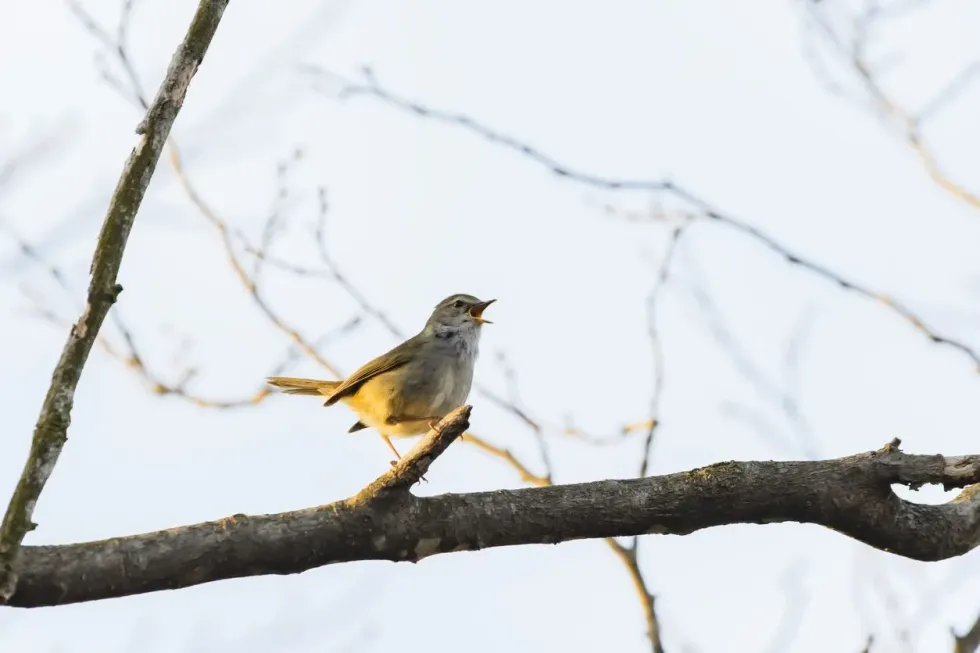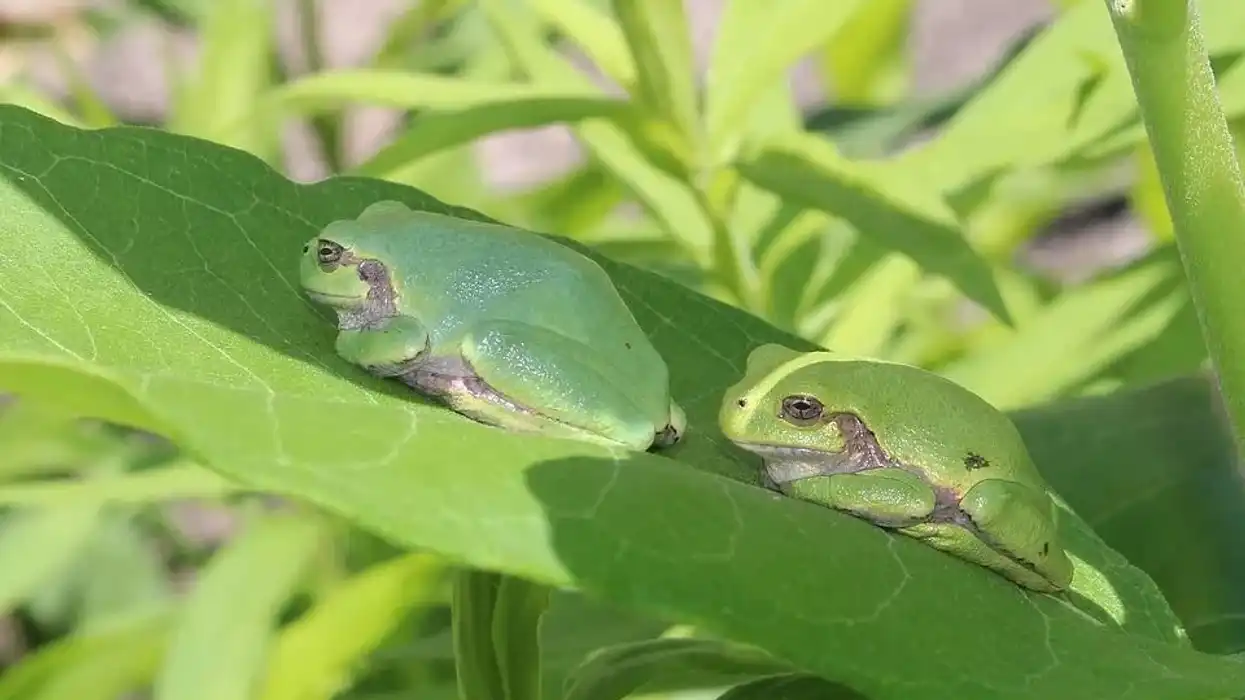Do you know any birds that have a sweet-sounding voice? In this article, you will be reading about one such bird, the Japanese bush warbler (Horornis diphone), also known as Cettia diphone or Uguisu. The Uguisu is well known for its musical call.
Because of its sweet warbler singing, the brown bird has earned the title of Japanese nightingale, even though it does not sing at night. Its beauty and attractiveness have led to the Japanese bush warbler being kept as cage birds.
During the breeding season, it has a unique way of calling for mates. The female bird sings a special call to attract male birds. The bird is commonly mentioned in Japanese poetry as well.
The bird is commonly found year-round in Japan. However, it is also found in the north of the Philippines, Taiwan, and Hawaiian islands.
They prefer to live in low hills or high mountain forest areas, or bamboo thickets during the summer season. But during winter, they seek habitat in lower regions of the mountain.
They live in areas where they can be well protected from predators like dogs, snakes and have plenty of food to eat. The main diet of the Japanese bush warbler (Cettia diphone) consists of worms, grasshoppers, and some berries.
If you like our article on Japanese bush warblers, you can also check out hawk facts and crowned eagle facts!
Japanese Bush Warbler Interesting Facts
What type of animal is a Japanese bush warbler?
A Japanese bush warbler (Horornis diphone) is a type of bird species commonly found in Japan. It is also called Uguisu in Japanese. It is an Asian passerine bird.
What class of animal does a Japanese bush warbler belong to?
The Japanese bush warbler (Horornis diphone) belongs to the class Aves.
How many Japanese bush warblers are there in the world?
The exact population size of the Japanese bush warbler (Horornis diphone) is unknown, but they have a very stable population and are not under any threat of extinction.
Where does a Japanese bush warbler live?
The Japanese bush warbler (Horornis diphone) lives in the woods where there is plenty of food and enough foliage to hide from predators. In winter, it is seen to move down from high mountains towards lower regions.
What is a Japanese bush warbler's habitat?
Japanese bush warblers (Horornis diphone) are natural inhabitants of Japan, China, and South Russia. The species prefer to live in the mountains, in highlands as well as lowlands.
Since their introduction to Hawaiian islands in 1914, they have widely spread in that region too. They also live in bamboo thickets and forests to find food supply and stay away from predators like snakes, cats, and dogs.
Who do Japanese bush warblers live with?
Japanese bush warblers (Horornis diphone) usually live on their own in solitary.
How long does a Japanese bush warbler live?
The average life span of a Japanese bush warbler (Horornis diphone) bird is two to five years.
How do they reproduce?
A female Japanese bush warbler bird sings melodiously to attract a male Japanese bush warbler bird during the breeding season. The female bird lays around four to six eggs, and they hatch in two to three weeks to produce babies called chicks.
What is their conservation status?
The birds are under the Least Concern category for extinction. They have a stable population, but their biggest threat is habitat loss since a lot of forests and woods are being cut in their native land.
Japanese Bush Warbler Fun Facts
What do Japanese bush warblers look like?
The Japanese bush warbler (Cettia diphone) of order Passeriformes, family Cettiidae is a small bird. It usually has an olive-brown tone and darker shades of green and brown towards the end of its tail and wings. The bird species also have narrow long light-colored stripes above its eyes.
It has claws to help the species grip and perch branches. The Japanese bush warbler also has dark eyes and a long beak, making it look like it is smiling. The bush warbler has a wingspan of 7.9-9 in (20-22cm).
It is 6.1 in (15.5 cm) in length. The bird has skin made of feathers. It also has very pale eyebrows and dark-colored eyes.
How cute are they?
The Japanese bush warbler bird looks quite attractive. Moreover, it sings very beautiful and distinctive songs, especially during the breeding season, adding to its personality!
How do they communicate?
A female Japanese bush warbler (Cettia diphone) sings song notes to call male Japanese bush warblers during the breeding season. It is a prevalent way of communication in Japanese bush warblers.
How big is a Japanese bush warbler?
The Japanese bush warbler (Horornis diphone) bird has a length in the range of 5.5-6.5 in (14-16.5cm) and it has a wingspan of around 7.9-9 in (20-22 cm). Thus, the bird has almost double the wingspan of a hummingbird!
How fast can a Japanese bush warbler move?
The fastest speed at which a Japanese bush warbler (Horornis diphone) can move is around 18 mph (29 kph).
How much does a Japanese bush warbler weigh?
A Japanese bush warbler (Horornis diphone) bird weighs around 0.033-0.048 lb15-22 g (15-22 g).
What are the male and female names of the species?
The male and female species do not have a different name. But the birds (Horornis diphone) are called Uguisu in Japanese. Some other common names for the bird include singing bush-warbler, Oriental bush-warbler, Japanse struikzanger, and Japanese nightingale.
What would you call a baby Japanese bush warbler?
A baby Japanese bush warbler bird or sometimes known as Japanse struikzanger is known as a chick.
What do they eat?
The Japanese bush warbler (Horornis diphone) birds are omnivores and eat plants as well as meat. They prefer eating worms, insects, grasshoppers, and sometimes they also eat berries and fruits.
Are they poisonous?
The little brown bird (Horornis diphone) is not poisonous and is also not harmful to humans. In fact, it is sometimes kept as a cage bird in Japan!
Would they make a good pet?
The warbler singing a song is one of the distinctive features of the bird (Horornis diphone). Hence in some places in Japan and China, the bird species are kept as cage birds. They would make a decent pet, and you might even get to listen to them singing a song during their breeding season!
Did you know...
In Japan, the song sung by this species is considered to mark the arrival of spring.
What do Japanese bush warblers sound like?
The bird’s call (Horornis diphone) starts with a long introductory note and a rapid warble that can be heard as 'uuuu-guisu.' This call is the reason for the Japanese bush warbler in getting the name Uguisu in Japan.










